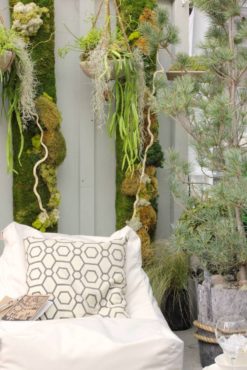
From not being able to afford flowers when she moved to the United States to having a business designing gardens large and small, Patricia Ruff has traveled far. Her love of flowers and her need to create helped her begin digging in the dirt. In turn, her artistic aspirations using nature as her canvas brought about a business doing artistic custom work for clients.
Living on the Key Peninsula with her husband, Don, and their menagerie of animals, she found a business that fits in perfectly with their rural lifestyle.
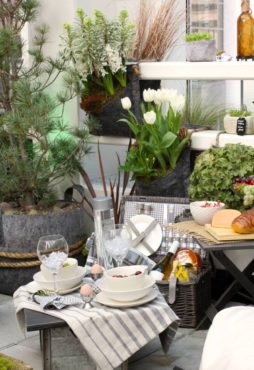
A transplant from the Netherlands where bouquets are plentiful and inexpensive, Ruff decidedly learned to grow her own flowers.
“In Holland, I picked up armful of flowers for next to nothing every week,” she said. “I would have two or three vases of flowers going all the time. When I moved to the States, I was disappointed that flowers were so expensive over here. A lot of them ship from Amsterdam. To have flowers in my life, I needed to tend a garden.”
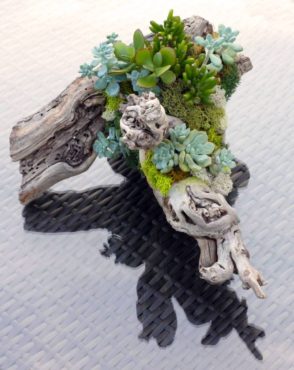
A career was launched. From there, she branched out and became a garden designer, hypertufa pot maker, kokedama instructor, moss artist and a vendor at Kitsap area farmers markets.
Ruff makes all her hypertufa pots, which she plants with a variety of plant life, especially unusual and hard-to-find succulents. She also discovered the art of kokedamas.
Kokedama (Japanese moss balls) are fast becoming a favorite way to hang houseplants or as outdoor string gardens. Popular in Japan where they originated, kokedamas are simple designs — a plant with a ball of soil, covered in moss and wrapped in string. The designer became the teacher, as Ruff offers kokedama workshops at local garden centers.
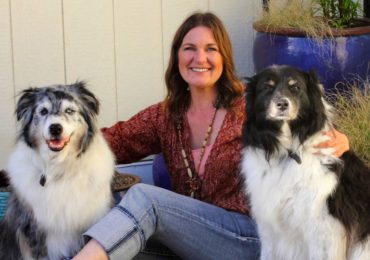
Ruff utilizes different plant material for her hanging-string gardens. Succulents easily take to growing this way. Hanging from the eaves of their home, string of fishhooks or sometimes called string of bananas (Senecio radicans glauca) are a favorite. Stems full of succulent leaves trail down from the moss ball and can grow at least 3 feet long.
Not all her kokedamas end up dangling in the air, however. A water-loving rush (Juncus effusus ‘Spiralis’) placed in a birdbath with stones, pebbles and water is where birds bathe and the rushes receive all the water they need.
At the Northwest Flower & Garden Show at the Washington State Convention Center in Seattle, Ruff designed her first “city living” display garden in February. Every year during the show, garden designers build 6-by-12-foot patio gardens. Ten small gardens line the Skybridge spanning Pike Street. Designed for apartment and condo spaces, the displays offer practical ideas and inspiration. Any of the designs convert easily to larger spaces with great ideas for decks, garden rooms or small niches between house and property lines.
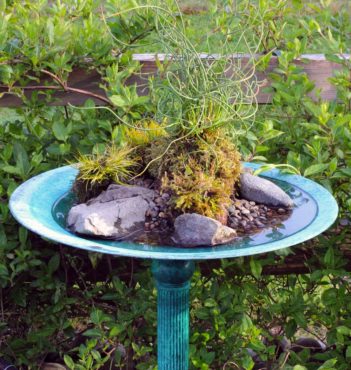
This year, crowds gathered around Ruff’s garden she named “Food for Thought.” People stopped in their tracks when they walked by her innovative display.
The designer chose a green spotlight that echoed the color of the glass canopy outside the window above the Skybridge. She nestled in two wonderful chairs that sat low in the space and built a sanctuary around it. A triptych of moss mini-landscapes back-dropped one wall on one side with hypertufa hanging baskets overflowing with plants. On the opposite wall, a flurry of kokedamas hung together under a shelf, while others sat on top. Below, a row of hypertufa troughs flanked the wall.
Shelves edged the windows where Ruff staged glass bottles, hypertufa pots and felt plant pouches. The gray saddlebag pouches held white hyacinths and tulips, tucked in with foliage plants. The color palette — limited to shades of gray, green and white — contributed a sense of respite from the hustle and bustle in the heart of the city.
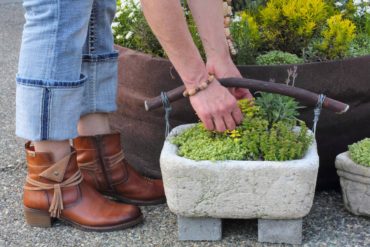
The judges loved the garden too. Ruff’s display won several awards — Best Sanctuary, Best Plant Material and People’s Choice Award — an exceptional accomplishment for a first-time designer at the garden show.
With a yearning to create, she credits her mother, who supported and nurtured creativity.
“We were always drawing or painting,” Ruff said.
As with many artistic people, she has to be starting, in the process of, or completing something that involves a vision that she turns into an art piece.
Ruff began working with moss, making what she calls mini-landscapes, because it is something she can construct indoors in the winter. The moss panels bring nature indoors. Stunning, nature designs are useful for green-thumb challenged people. They can’t kill it, and there is no maintenance.
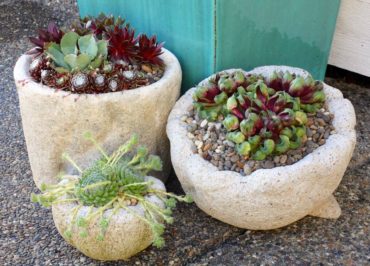
Adding nature indoors beyond the windows where you can’t reach them easily to water is tricky. Moss panels will go just about anywhere and stay green year round. Ruff has used them for window valances, as triptych art or hung high up on tall ceilings.
“They’re great to hang in a spot where watering a plant would not be practical. You can hang these up high because you don’t have to care for them,” she said. “Although you wouldn’t put them in bathrooms because of the moisture, you can put them in a powder room with no natural light.”
During the Northwest Flower & Garden Show, people thought the moss panels were real.
Ruff laughed when she said, “I had to touch up the moss where it got a little bare after a few days.” No wonder when 60,000 people attended the show, many stopped by her city-living garden.




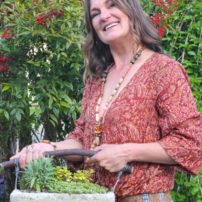
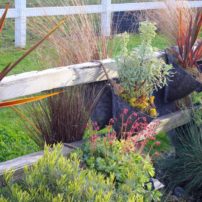
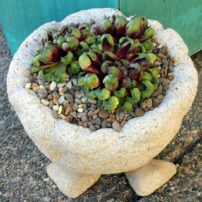
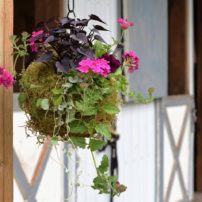
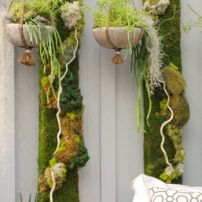
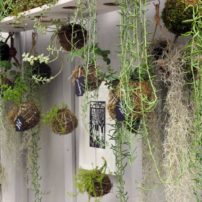
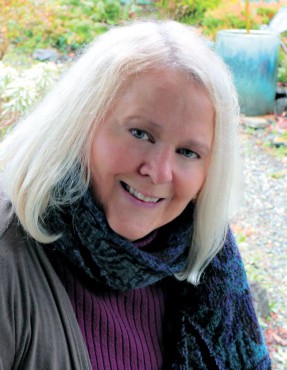
























Comments